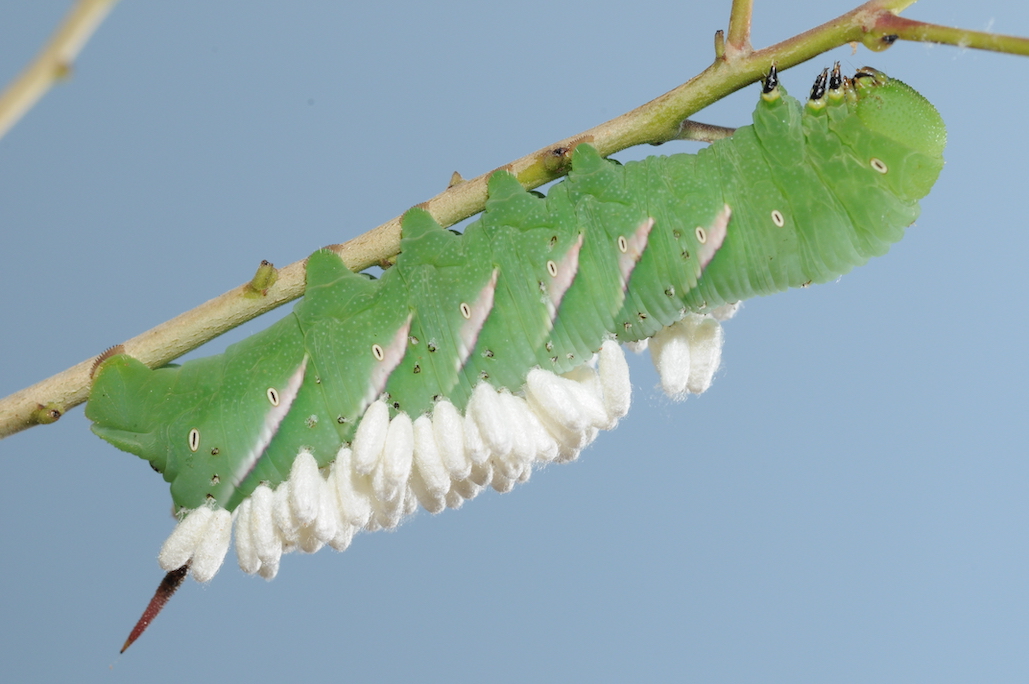Cotesia Congregata, Vol. 6, No. 25

Cotesia congregata
Order: Hymenoptera
Family: Braconidae
Tomato gardeners are occasionally perplexed to find a large hornworm on their plants with dozens of small, white capsules along its back. The usual assumption is that these must be eggs of some kind. But these are not eggs, they’re cocoons, wasp cocoons.
Cotesia congregata is a small, black wasp that specializes in parasitizing hornworms, the caterpillars of sphinx moths (sorry, this little wasp has no common name). Female wasps seek out hornworm caterpillars when they are small, less than an inch long, and use their piercing ovipositor to insert their eggs into the body of the unlucky caterpillar. As many as sixty to more than a hundred eggs may be injected by a single wasp. The wasps are attracted by odors released by the caterpillars as they feed. The wasp larvae feed inside the caterpillar for about 12 days before chewing their way out of the body and forming their white, silken cocoons. These cocoons may or may not fall off before the wasps emerge. Next time you find a caterpillar covered with such cocoons, try placing it in a jar with a couple of leaves. You won’t have to wait many days until the tiny black wasps emerge.
Like most parasitic wasps, C. congregata are pretty host specific. They only lay their eggs in a few non-sphinx caterpillars and around a dozen species of sphinx moths, including several species of Manduca. The hornworm we most often find on our tomatoes is tobacco hornworm, Manduca sexta. Tomato hornworms, Manduca quinquemaculata, are less common. The hornworm in the photo is a Rustic Sphinx, Manduca rustica. Rustic sphinx caterpillars do not eat tomatoes; they prefer certain ornamental plants. All three of these are acceptable host for C. congregata, and they also attack caterpillars of the catalpa sphinx and hummingbird sphinx, but there are many species of sphinx moths they do not attack.
Interestingly, these little parasitic wasps have parasites of their own. There are even smaller wasps that specialize in parasitizing cocoons of C. congregata. These are called hyperparasites, and there are more than a dozen species of hyperparasites that parasitize C. congregata. In the insect world, it does not always end there. In some cases, there are even parasites of the hyperparasites. There are also many other species of Cotesia wasps, and they each have their own hosts, and their own hyperparasites. It’s a bug eat bug world out there!
Big bugs have little bugs
upon their backs to bite ‘um
and those bugs have lesser bugs
and so on ad infinitum
This little poem, or something similar, has been attributed to various authors, including Ogden Nash, Johnathan Swift and Augustus De Morgan.
Blake Layton, Extension Entomology Specialist, Mississippi State University Extension Service.
The information given here is for educational purposes only. Always read and follow current label directions. Specific commercial products are mentioned as examples only and reference to specific products or trade names is made with the understanding that no discrimination is intended to other products that may also be suitable and appropriately labeled.
Mississippi State University is an equal opportunity institution.

